These homemade potato rolls are sure to please at your next family dinner or holiday meal! This recipe makes soft, fluffy potato bread rolls that are impossibly light and buttery, perfect for any occasion.
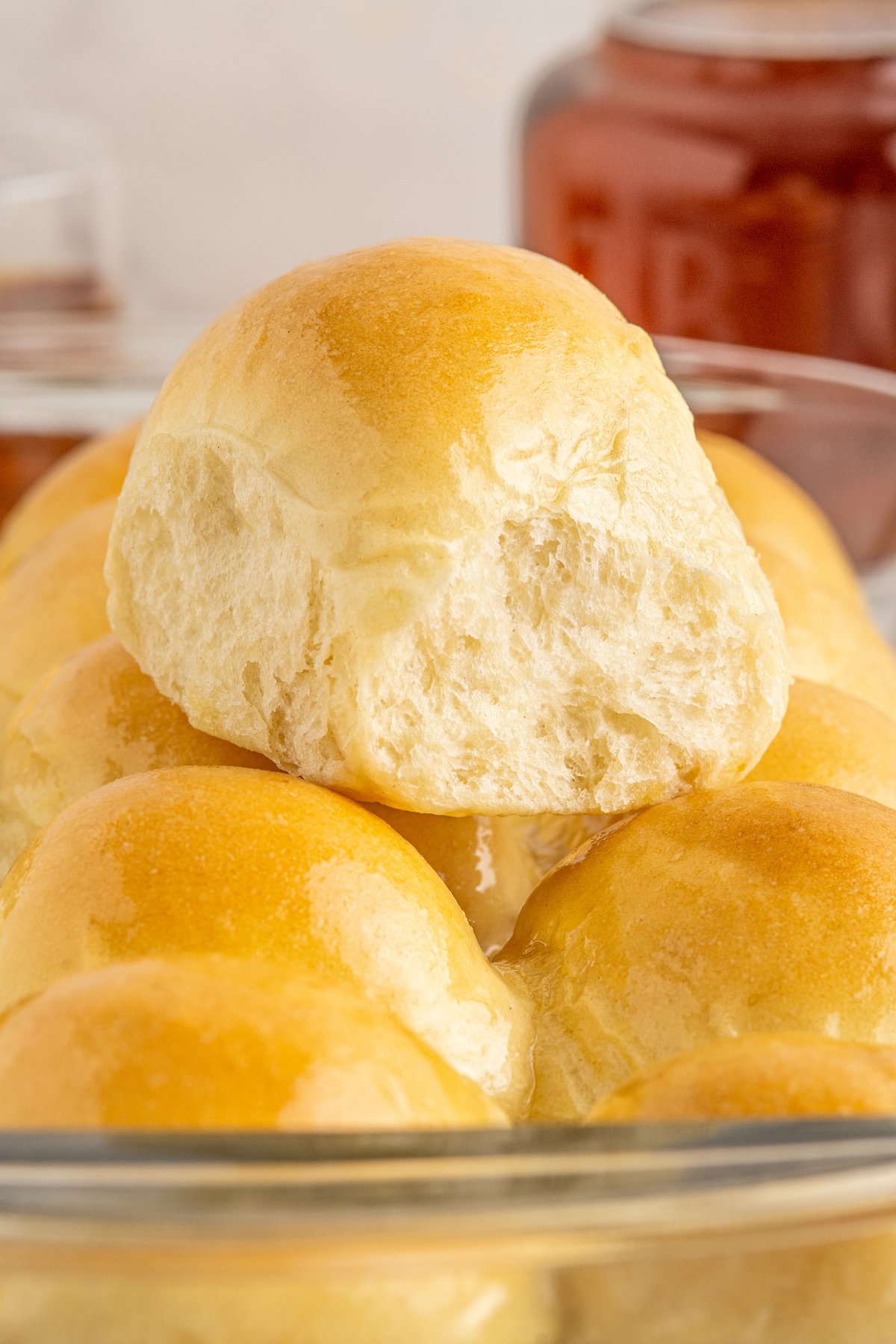
Why You’ll Love This Potato Dinner Rolls Recipe
These homemade potato rolls are easy to make, and such a crowd-pleaser at the dinner table! Potato bread recipes are famous for their light, fluffy texture that falls between a challah or brioche, made without the eggs. If you are looking for a truly soft, meltingly delicious dinner roll recipe, this is it! Here’s why you’ll love it:
- Soft and buttery. There’s nothing quite like potato dinner rolls. If you’ve never had one before, brace yourself for a melt-in-your-mouth, buttery, fluffy roll experience like no other.
- Versatile. I’ve made these potato rolls on so many occasions and they haven’t disappointed us yet! They’re a perfect pairing with cozy soups, pot roasts, and hearty chili, just as they are a match made in holiday heaven with a Thanksgiving turkey and gravy.
- Easy to make. This is a yeasted dough recipe, but don’t let that intimidate you. I promise, these potato rolls will have you coming back for more, even if you’re a bread-baking beginner! The dough is simple and I cover all the steps to walk you through it.
If you are looking for more classic dinner rolls, try out these fluffy Hawaiian rolls or my favorite soft dinner rolls recipe! And if you’re craving something a little different, we love these copycat Texas Roadhouse Rolls.
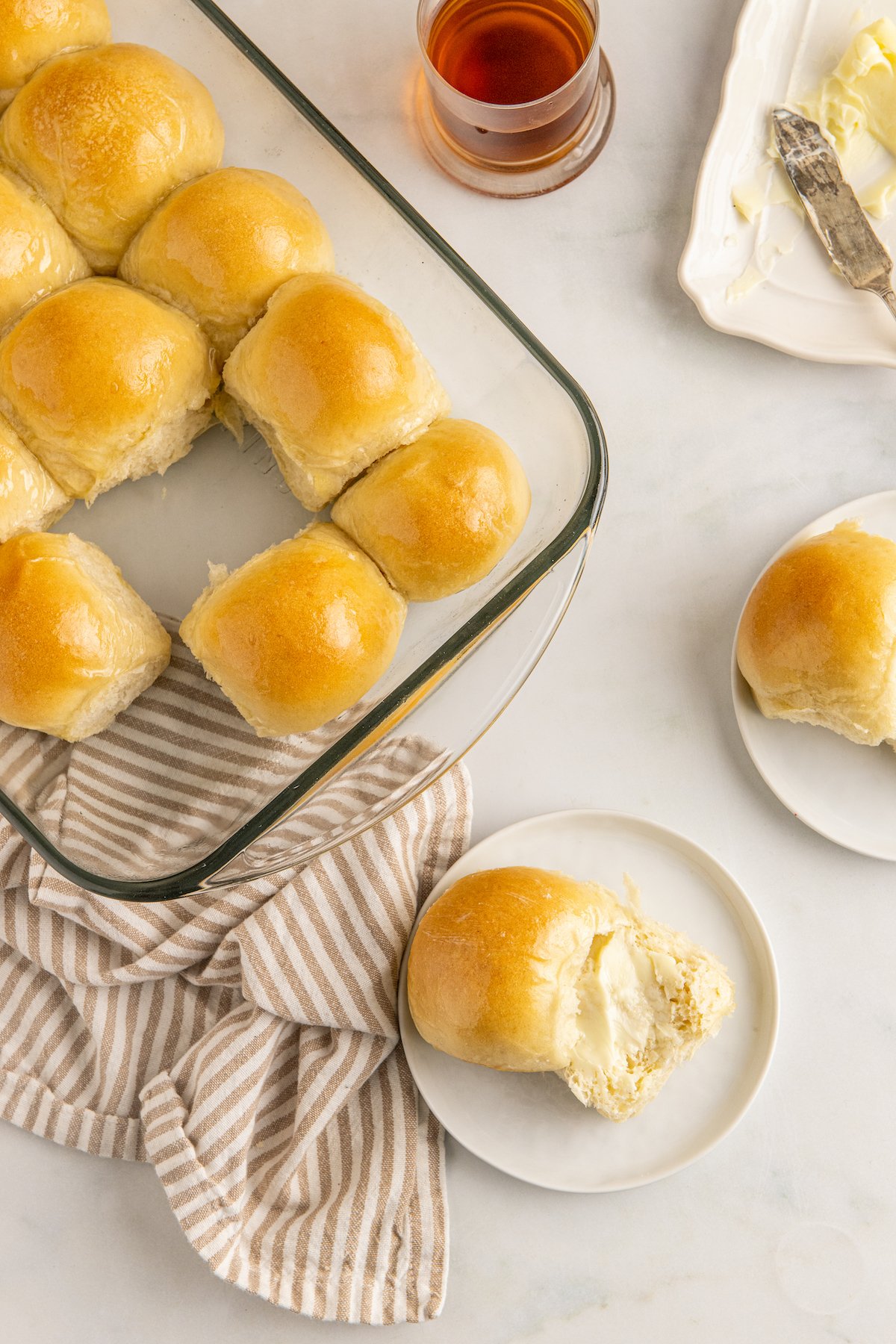
Potato Rolls vs. Regular Rolls
Potato rolls don’t actually taste like potatoes. They’re a lot like regular dinner rolls, only lighter, fluffier, and a bit more buttery. Adding mashed potato to the dough creates a special softness due to the extra starches. Along with plenty of butter in the recipe, it makes these rolls a real delicacy!
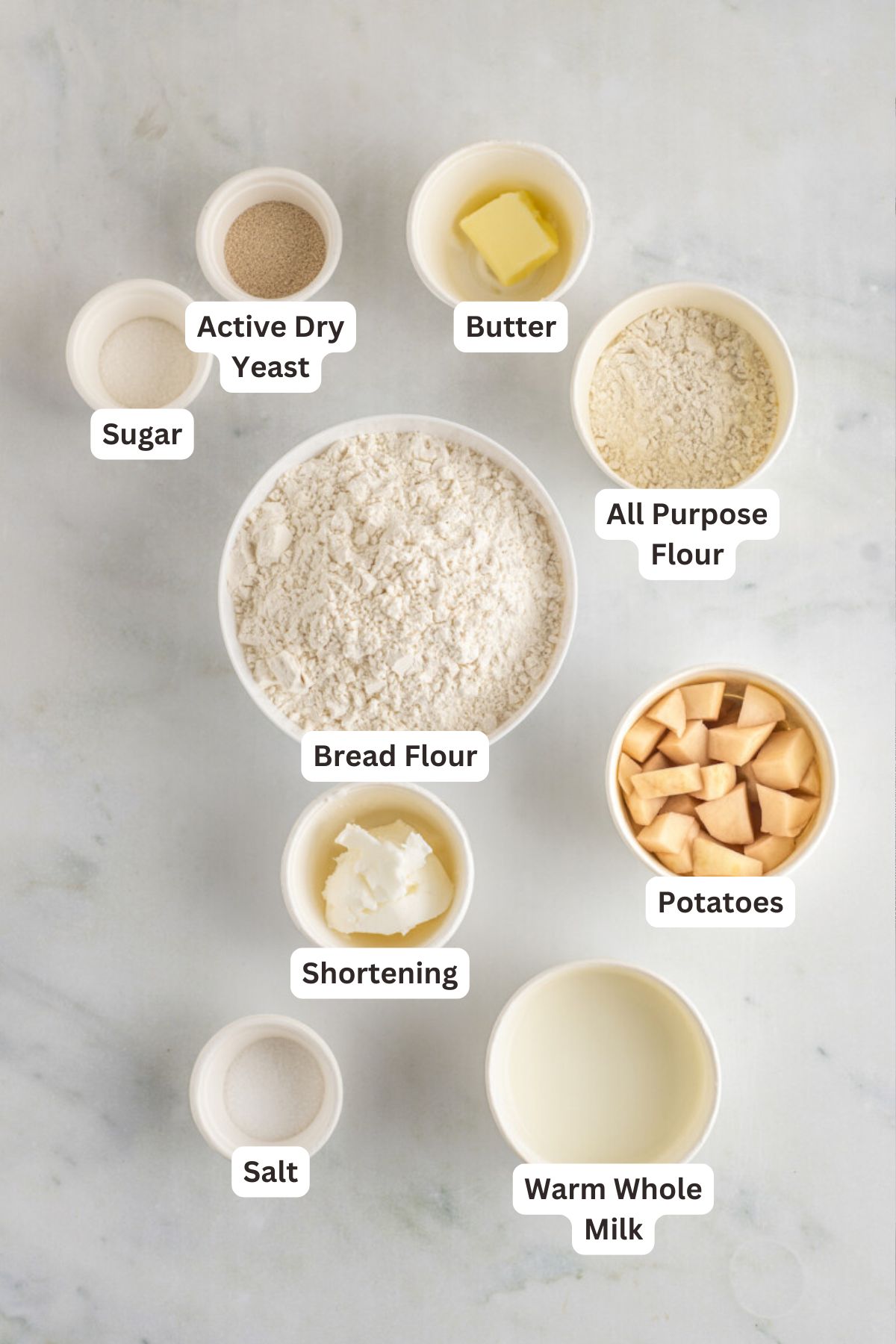
Key Ingredients
The ingredients for potato rolls are similar to other yeast roll recipes, but with added mashed potato, and some of the water from cooking the potatoes to make the texture extra soft. Here’s a list of what you need along with some notes. Scroll down to the recipe card for a printable ingredients list with amounts.
- Potatoes: Peel and dice the potatoes before cooking them. Afterward, set aside some of the cooking water that you used to boil the potatoes, as you’ll add this to the bread roll dough!
- Milk: Warmed to just above body temperature. This way, it’ll dissolve the sugar and yeast without killing the yeast. You can use warm water, but the rolls won’t have the same rich flavor.
- Yeast: I use active dry yeast for this recipe.
- Sugar: Regular granulated sugar is fine. Honey and maple syrup are good substitutes.
- Flour: A combination of bread flour and all-purpose flour creates that stretchy, moist crumb we’re looking for. If you don’t have bread flour, you can use only all-purpose flour instead.
- Shortening and Butter: You can use just butter if you prefer, but shortening is an easy baking trick that gives these rolls a bakery-style softness.
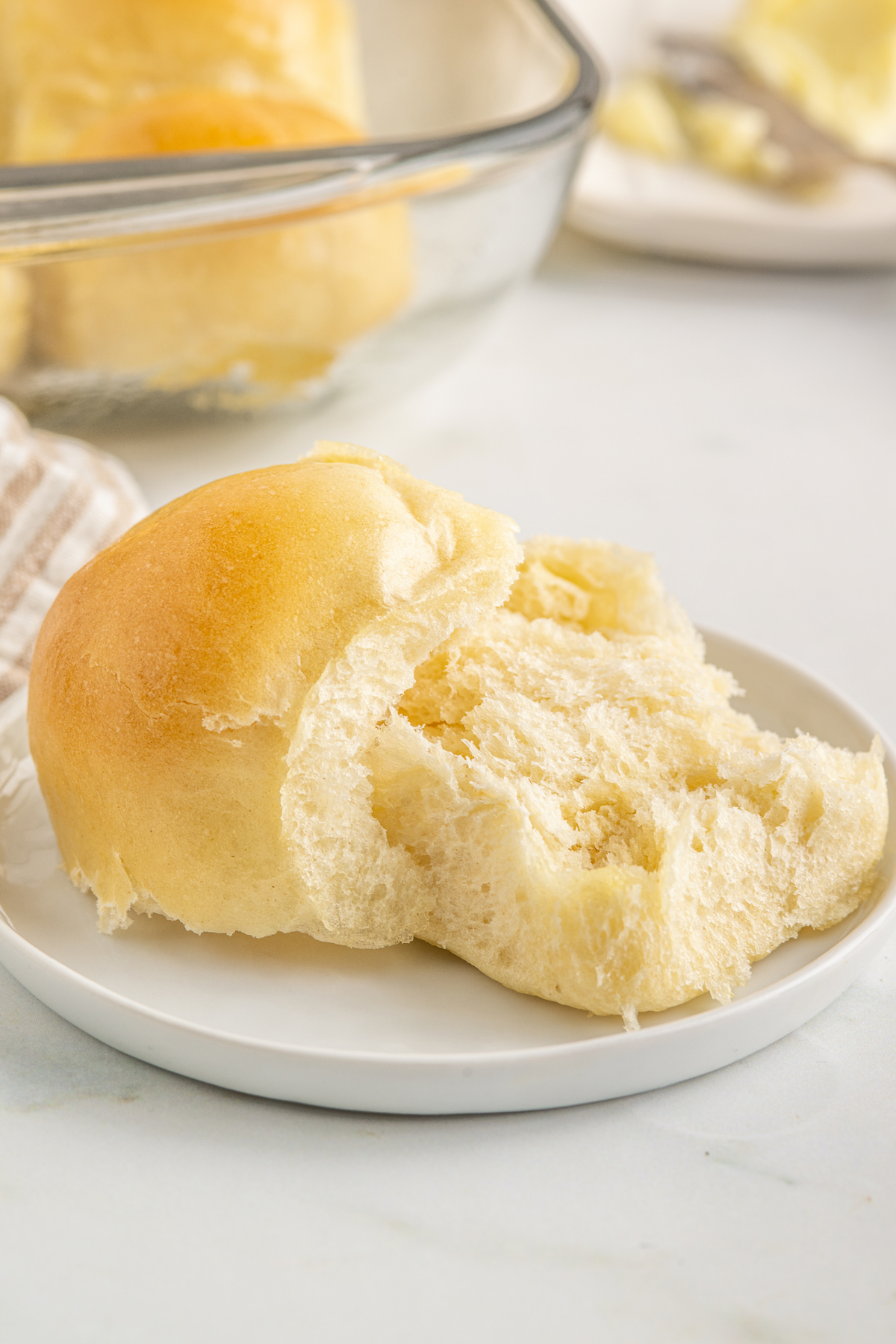
How to Make Potato Rolls
These potato bread rolls are super simple to make, even a beginner can master them! Follow the step-by-step photos below, and scroll down to the recipe card for printable recipe details.
Make the Dough
First, let’s walk through how to make a quick and easy potato bread dough with a quick, 1-hour rise time.
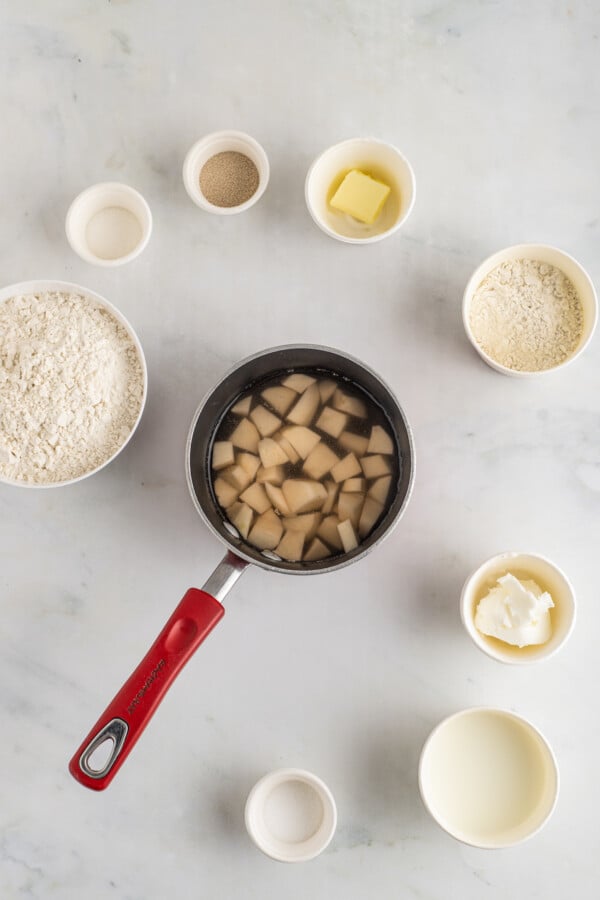
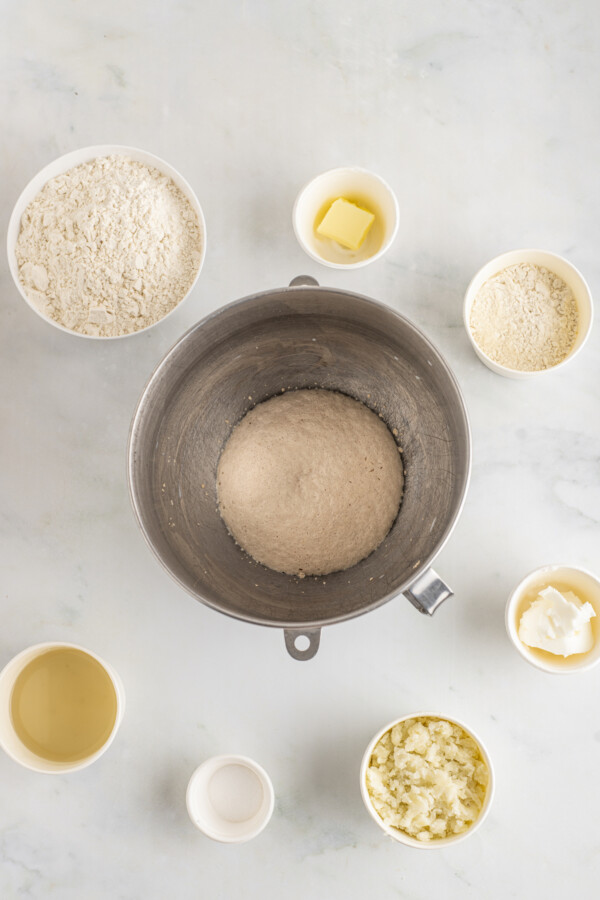
- First, prepare the mashed potatoes. Boil diced potatoes over medium-high heat. Once they’re fork-tender, drain the water, reserving half a cup for your dough. Afterward, mash the potatoes while they’re still hot.
- Proof the yeast. Leave the mashed potatoes and reserved cooking water to cool off, and combine warm milk, yeast, and sugar in the bowl of your stand mixer. Stir lightly, and let the yeast proof for 5 minutes until it’s foamy.
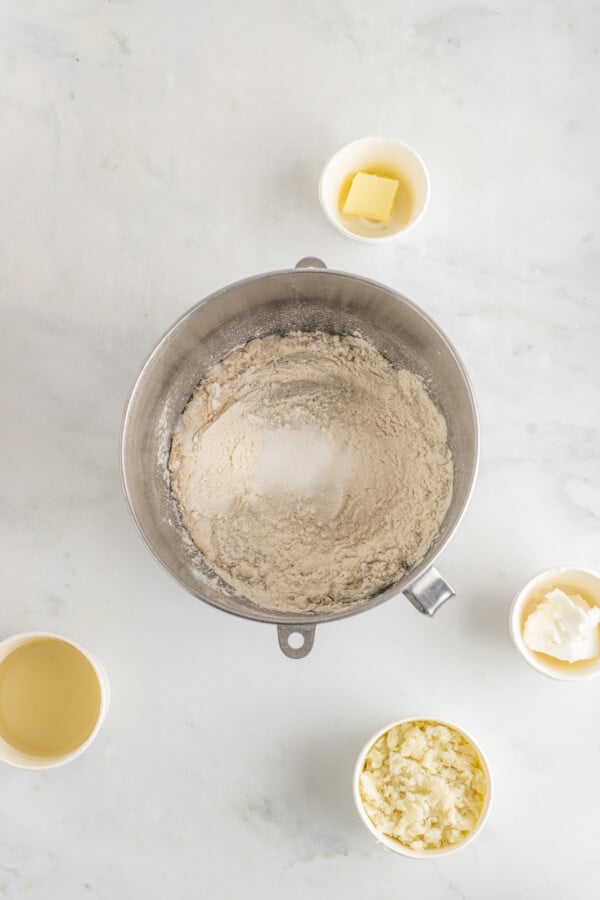
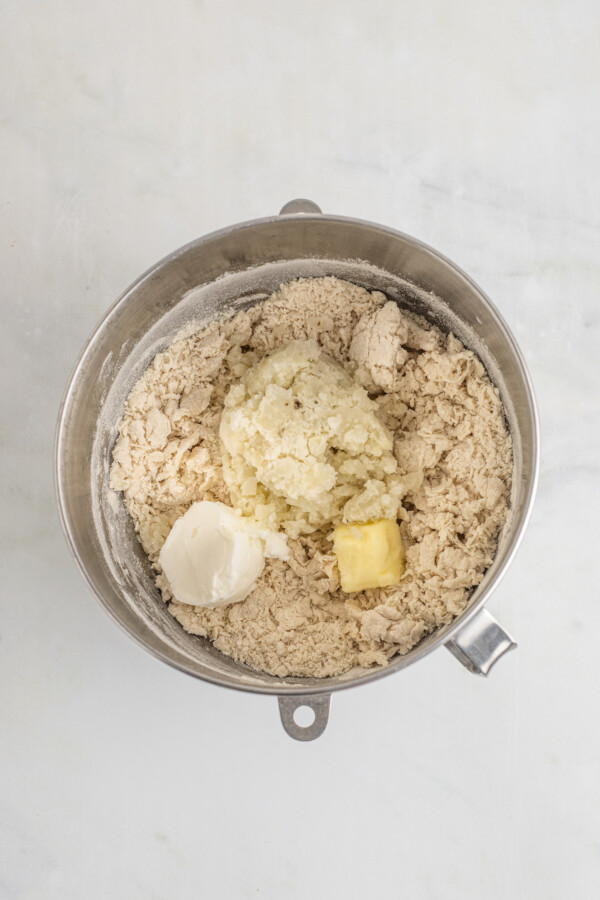
- Make the dough. Next, add the flour and a pinch of salt to the yeast mixture. Mix using the dough hook attachment until that reaches a shaggy texture. Now, you’ll add in the potato water and mashed potatoes, shortening, and butter. Keep mixing until the dough comes together.
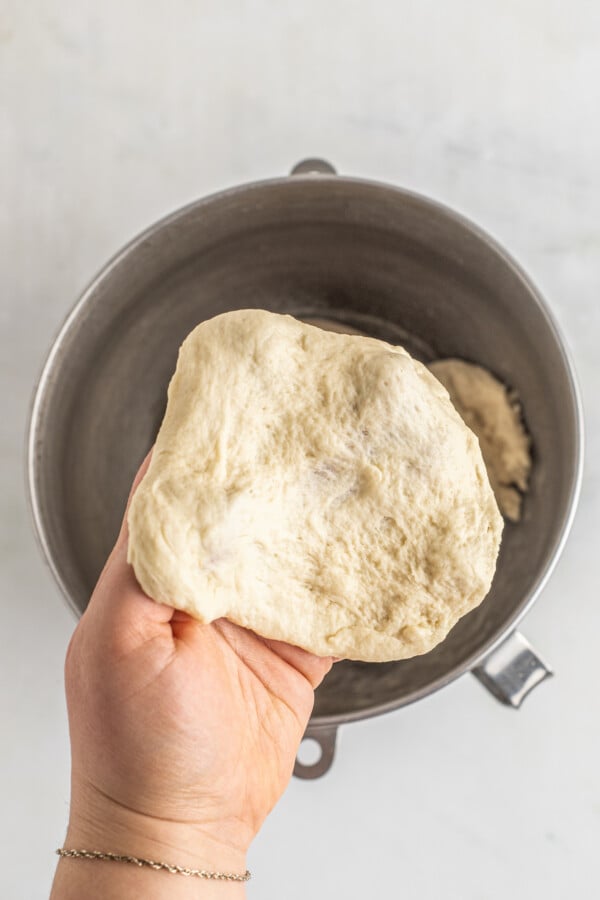
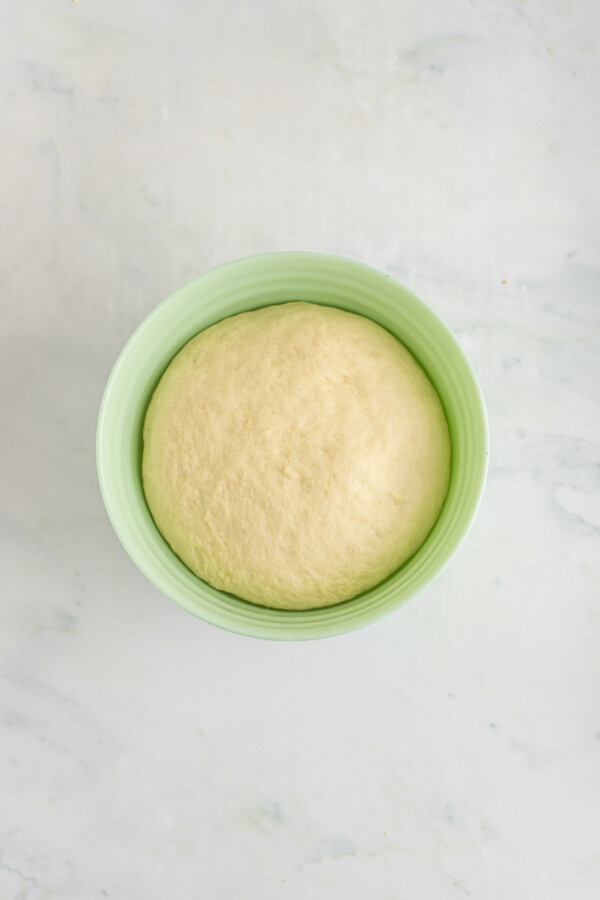
- Finish kneading. Continue to knead the dough on medium speed for another 10-15 minutes, until it’s soft and pliable.
- First rise. Shape the dough into a ball, plop it into a large greased bowl, and cover it with a clean kitchen towel or plastic wrap. Let the dough rise somewhere warm for an hour. It should double in size.
Shape and Bake the Rolls
After the first rise, it’s time to divvy up the dough, shape your potato rolls, and get them ready for the second rise (and the oven).
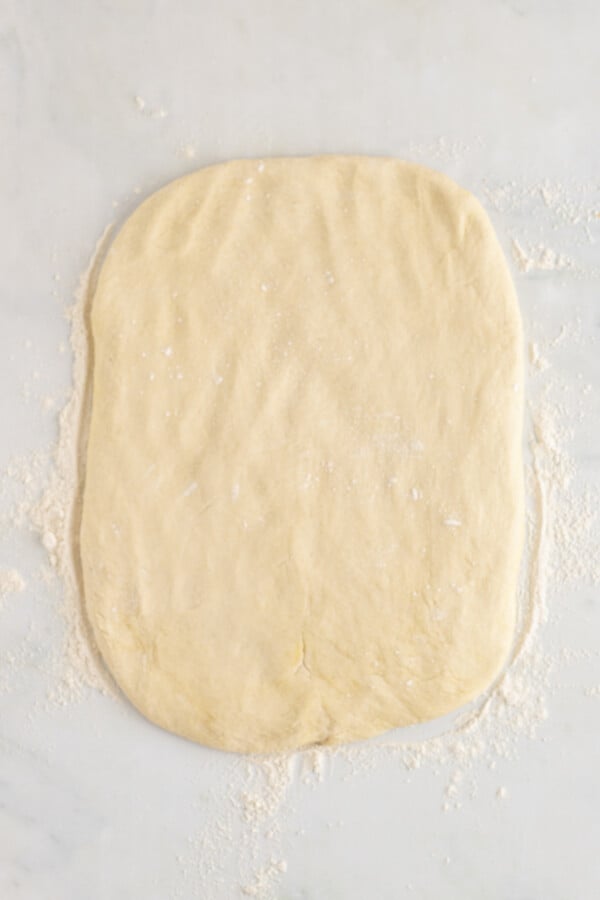
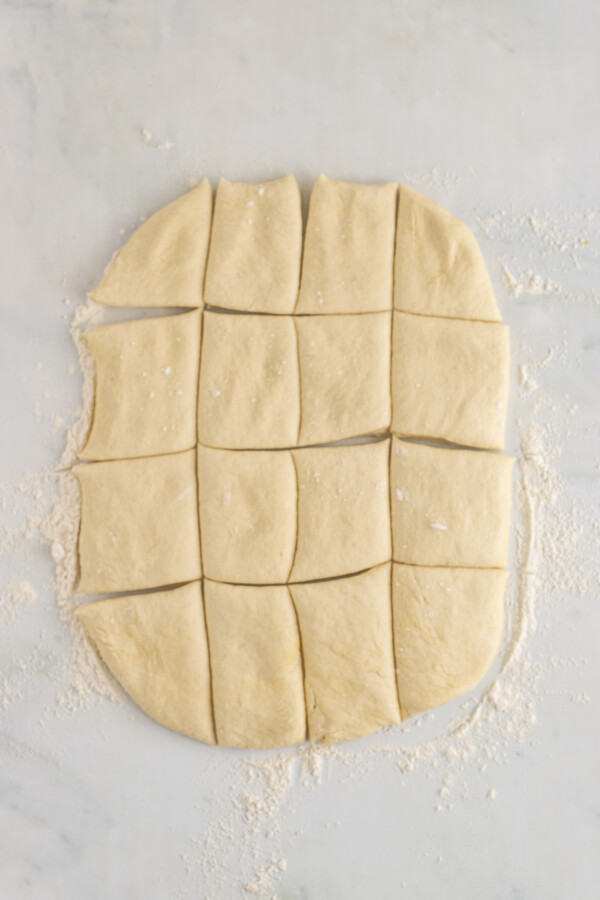
- Press out the dough. Punch down the risen dough. Afterward, turn the dough out onto a floured surface and press it into a large rectangle. Use a pizza cutter or a knife to cut the dough rectangle into 16 even-sized squares.
- Shape the rolls. Roll each dough piece into a smooth dinner roll shape. After, place them into a greased 9×13 baking dish.
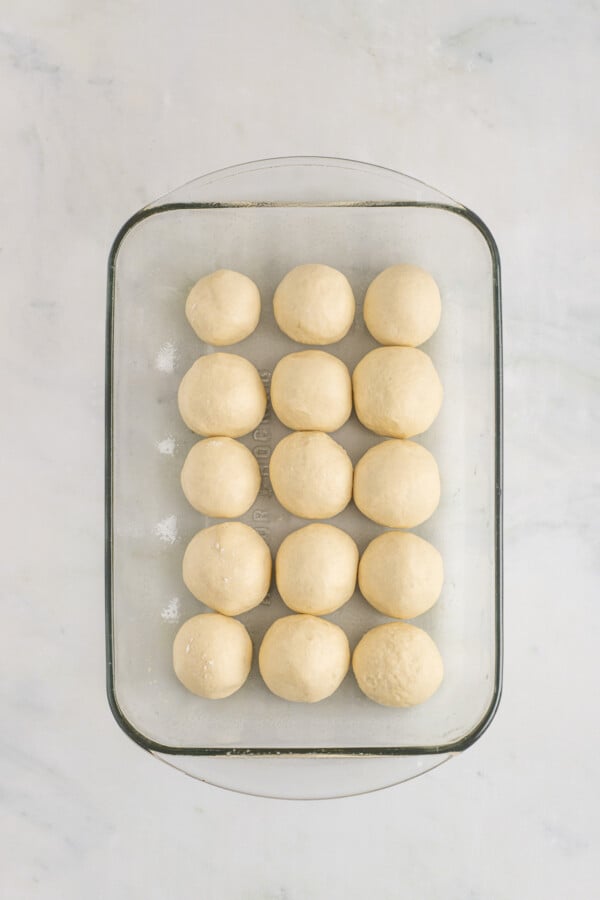
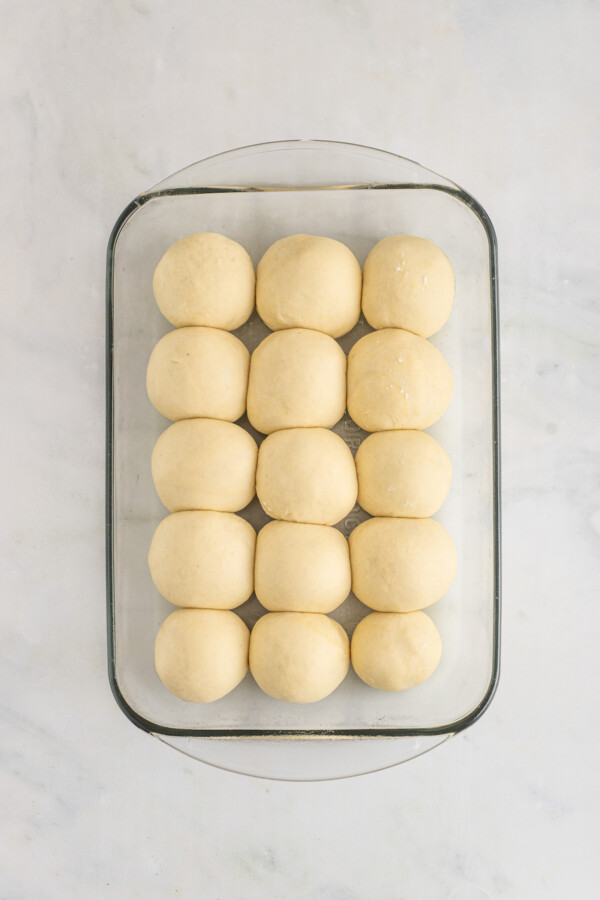
- Second Rise. Lightly cover the rolls, and let them rise for 45 minutes to an hour. Towards the end of the rise time, preheat the oven to 350°F.
- Bake! Place the risen rolls into the preheated oven on the center rack, and bake for 25 to 30 minutes, until they are golden brown and baked through. Take the rolls out of the oven and serve warm, with melted butter brushed on top if you like.
Want to save this recipe?
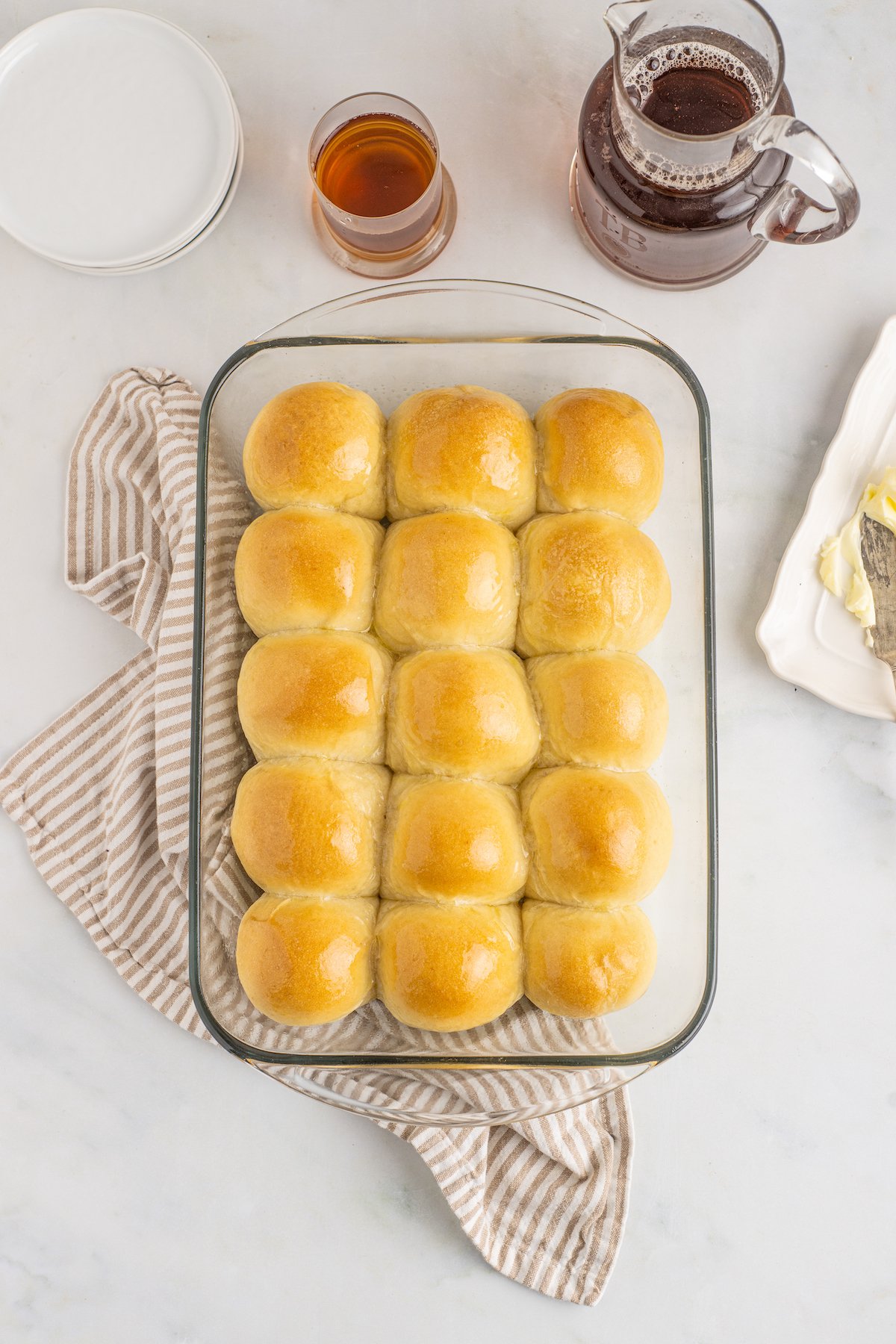
Baking Tips
- Temperature: Make sure that the temperature of the milk isn’t warmer than 105°F and 110°F when activating the yeast. If the milk is too hot it’ll kill the yeast, and if it’s too cold, the yeast won’t activate at all.
- Activating the Yeast: After 5-10 minutes the yeast mixture should be foaming. If it isn’t, that means your yeast was old or maybe your liquids were the wrong temperature. Either way, you’ll need to prove a new batch of yeast, milk, and sugar to get a good, bubbly mixture.
- Baking Dish: Depending on the size of your pan, you may need to bake these potato rolls in batches (speaking from experience). For neater, less-squished rolls, I usually bake 15 rolls in my 9×13 baking dish and bake the last one separately in a ramekin or similar.
- Extra Butter: The best time to brush these rolls with melted butter is when they’re hot and fresh from the oven. It gives them a pretty finish and it makes them taste all the better! For even more flavor, borrow the garlic butter topping from my garlic knots recipe.
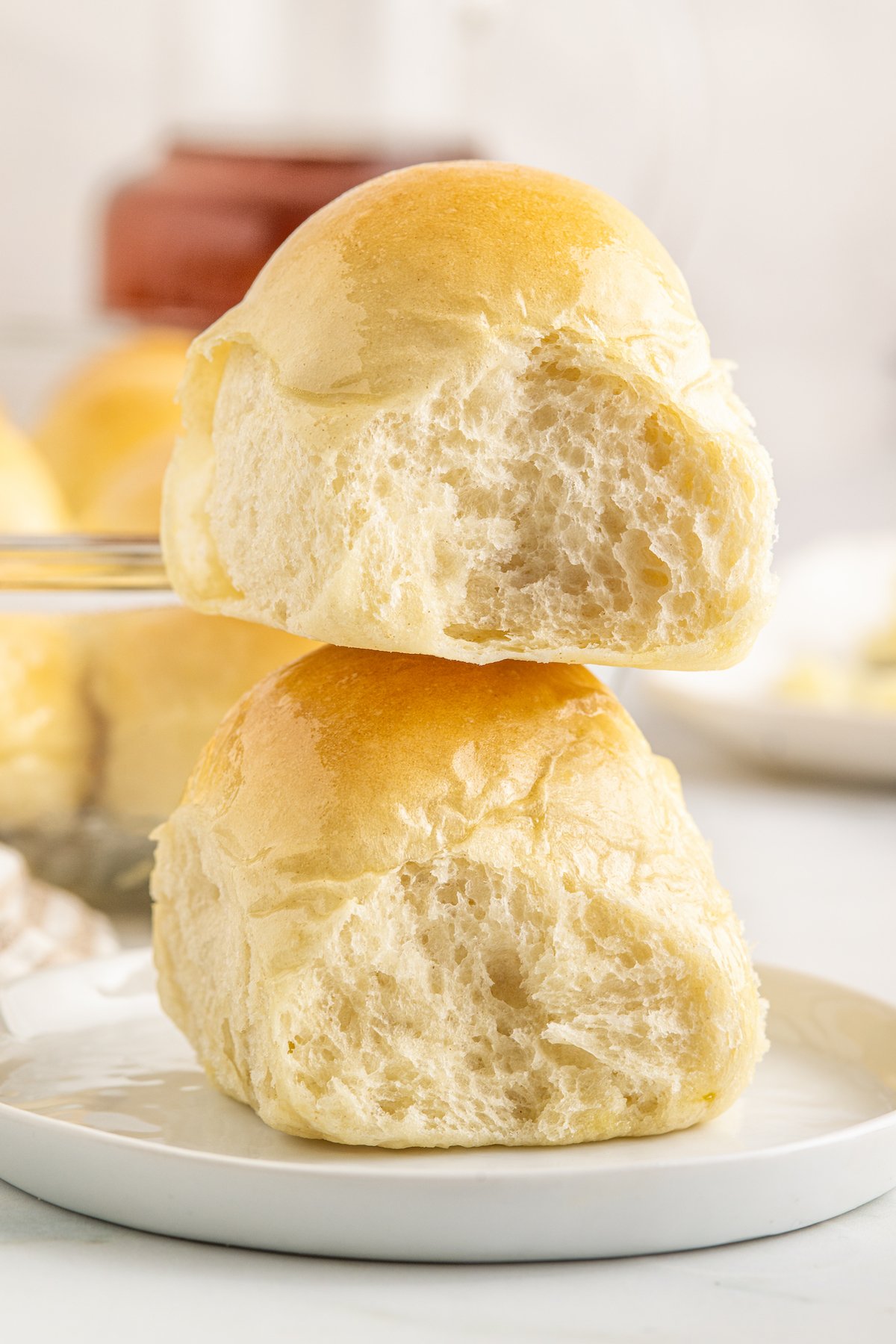
Serving Suggestions
Potato rolls are the king of side dishes! They go wonderfully with almost any main course. Try these soft, scrumptious dinner rolls with your favorite weeknight meals, or as part of a bigger holiday spread. Here are some of our favorite dinners:
- Stew: These rolls are just the thing for sopping up the broth from a warm bowl of creamy crockpot chicken stew. Or, if you are craving a good beef dinner, try out my very favorite crockpot pot roast!
- Pork: If it’s a special occasion or the holidays, I’ll pair these potato rolls with this classic stuffed pork loin, with its festive spiral! These cranberry apple stuffed pork chops are another favorite.
- Turkey Dinner: I love this easy, all-in-one Instant Pot turkey and gravy. Just add a side of fluffy rolls and stuffing, and it’s like Thanksgiving came early!
- Chili: Potato rolls and slow cooker chili might just be the best combination of them all. These rolls are a great stand-in for cornbread for soaking up those bold, beefy flavors.
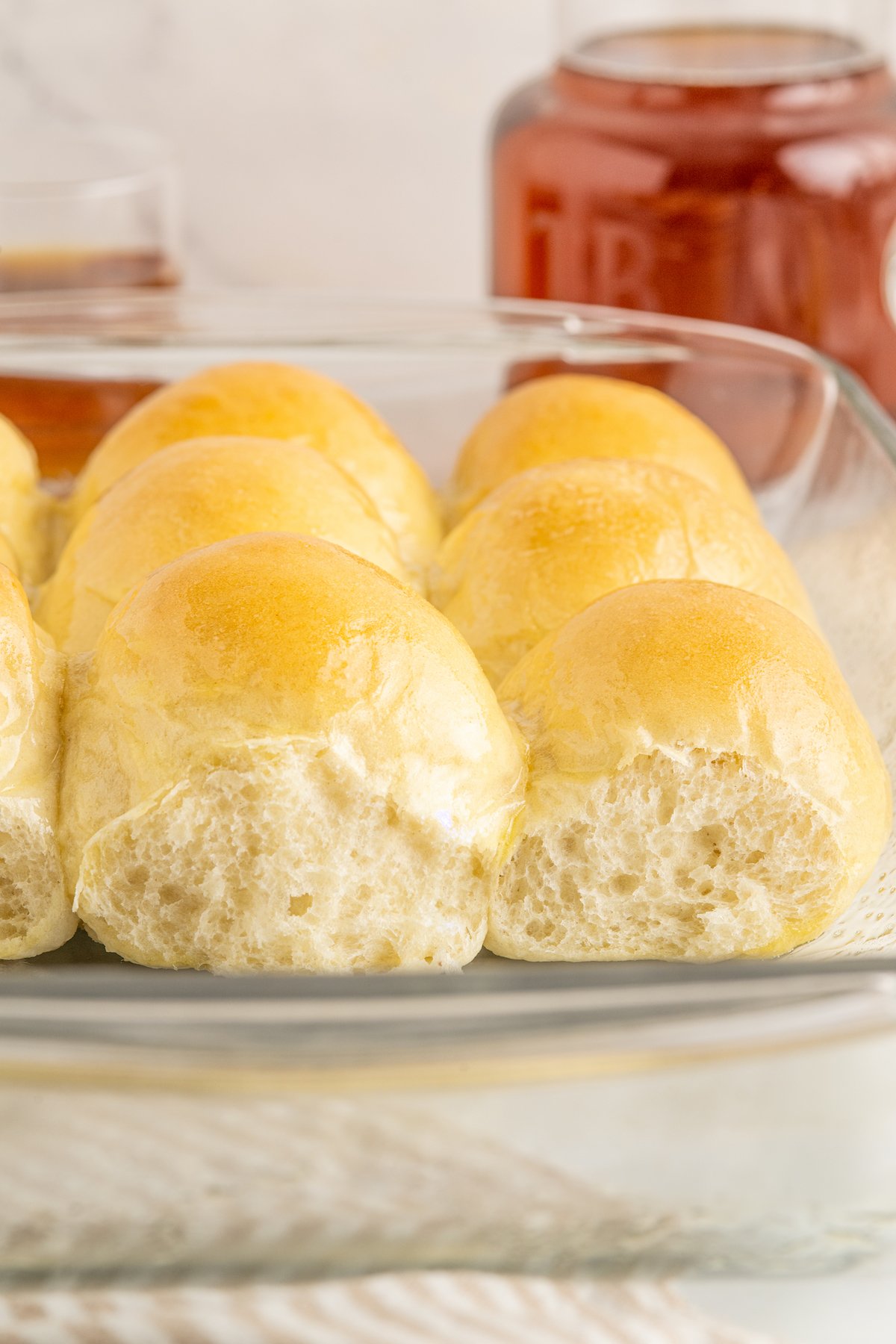
How to Store Potato Rolls
- At room temperature. Store these dinner rolls in an airtight container at room temperature for up to 3 days. You can also store them in the fridge, which may help them to last a little bit longer.
- Reheat. If you want to warm up your leftover potato rolls, throw them in your toaster oven, or zap them in the microwave for a few seconds.
- Freeze. Cool the leftover rolls to room temperature and wrap them tightly in a layer of plastic wrap, followed by a layer of foil, or slip them into a freezer bag. Try to leave as little air as possible in the package (to prevent freezer burn). Freeze the rolls for up to 3 months and thaw them at room temperature before serving.
Dinner Potato Rolls Recipe
Ingredients
- ¾ cup peeled and diced potatoes
- ½ cup potato water, reserved from boiling potatoes
- ½ cup warm whole milk
- 2 ½ teaspoons active dry yeast
- 1 teaspoon granulated sugar
- 3 ½ cup bread flour
- ½ cup all purpose flour
- 1 teaspoon salt
- 3 tablespoons shortening
- 3 tablespoons salted butter, room temp
Want to save this recipe?
Instructions
- Add potatoes to a small saucepan and fill with enough water to cover the potatoes. Bring to a boil over medium-high heat and cook until the potatoes are fork tender.
- Once cooked, remove from the heat and drain, reserving 1⁄2 cup of the potato water. Mash the potatoes, then set aside to cool.
- In the bowl of a stand mixer fitted with a whisk attachment combine warm milk, yeast and sugar. Lightly whisk together, then let proof for 5 minutes, until bubbly.
- Once proofed, swap the attachment to a dough hook and add in bread flour, all purpose flour and salt. Mix until combined – the texture will be clumpy and sandy.
- Add in potato water and mix, then add in potatoes, shortening and butter. Knead until the mixture comes together – the texture will seem dry, but just trust the process! Continue kneading the dough on medium speed for about 10-15 minutes. The dough will be ready when it is able to be stretched out without breaking.
- Form the dough into a ball, then place into a large greased bowl. Cover with plastic wrap or a clean kitchen towel and let rise for 1 hour, or until doubled in size.
- Once risen, punch down the dough, then turn out onto a clean, lightly floured surface. Press the dough out into a rectangle, as even as possible. Cut into 16 even squares. Roll each dough piece and pinch together and roll until smooth.
- Place the rolled dough pieces into a greased 9×13” baking dish. Lightly cover, then let rise for 45 minutes – 1 hour. Towards the end of the rise time, preheat the oven to 350°F.
- Once risen, place the rolls into the preheated oven on the center rack. Bake for 20 to 25 minutes, until golden brown and baked through.
- Once baked, remove from the oven. Serve while warm. Can brush tops with butter if desired.
Notes
- Storage: I like to store these rules at room temperature, in an airtight container, or just in a baggie. They will keep for about three days. You can also store them in the fridge, which may help them to last a little bit longer.
- Milk Temperature: For best results, make sure you use the correct temperature milk. If the milk is too hot, it will kill the yeast. If it is too cold, the yeast won’t activate and the rolls won’t rise properly. The ideal temperature is between 105°F – 110°F.
- Spacing: You can place all of the rolls into the baking dish, or bake 15 in the baking dish and bake the last one separately. If you bake all of them at once, you will just have to push them together a bit more to make room for the 16th roll.
- Brush With Butter: Brush the baked rolls with melted butter as soon as they come out of the oven if desired.
- Water vs Milk: Warm water may be used instead of milk, but milk will give the bread a great texture and flavor.
- Flour Mixture: Although I like the blend of bread flour and all-purpose flour, additional bread flour may be used instead. All bread flour will make these rolls less soft.
Nutrition
Categories:
Post may contain affiliate links. Read my disclosure policy.

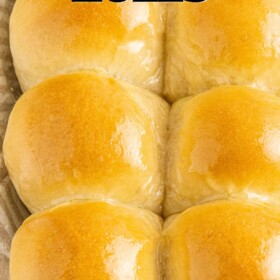
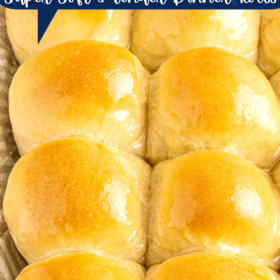
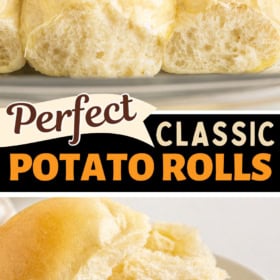
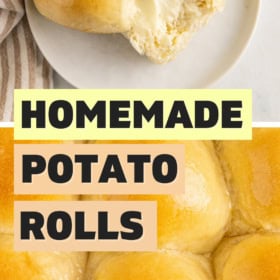
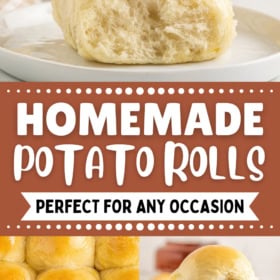
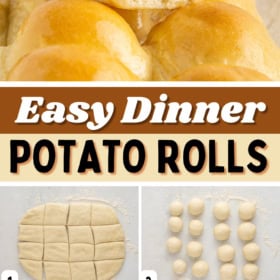
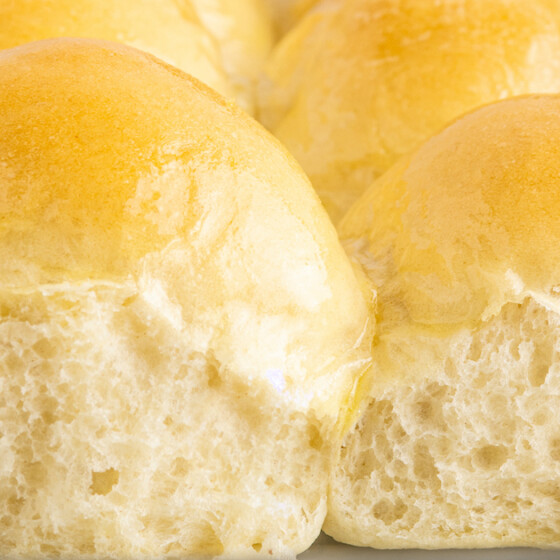

Exellent ! First time ever making potato rolls but it will not be my last.